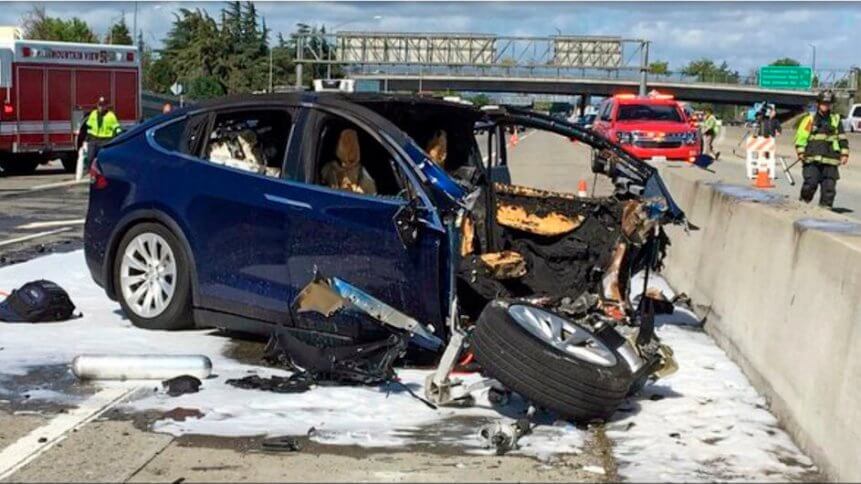Tesla’s autopilot shows some way still to go before commercializing AVs

- Numerous issues have arisen from Tesla’s advanced driver assistance system (ADAS) that it continues to call “Autopilot”
- Doubts about Tesla going fully autonomous are mounting, as experts reckon the tech is not ready for all road types
- Tech giants are instead betting on robocar service, while major carmakers will offer increasing levels of autonomy, bit by bit
In 2016, electric vehicle and clean energy company Tesla Inc. faced numerous questions about its autopilot technology after a Florida driver was killed when the sensors and cameras failed to see and brake for a tractor-trailer crossing a road. Tesla now faces more scrutiny than it has in the last five years for its autopilot.
In 2020, in a typically bold statement, Tesla CEO Elon Musk declared that his company’s vehicles are on the brink of becoming fully autonomous, raising more than a few doubtful eyebrows. “I’m extremely confident that Level 5 autonomy, or essentially complete autonomy, will happen, and I think it will happen very quickly,” Musk said in a video message to the World Artificial Intelligence Conference in Shanghai. “I remain confident that [Tesla] will have the basic functionality for Level 5 autonomy complete this year.”
However, given the known shortcomings of deep-learning algorithms, the main technology used in Tesla’s self-driving features, it’s not clear how he plans to achieve that goal. Level 5 is the highest level of autonomy for self-driving cars, where “the vehicle can do all the driving in all circumstances, [and] the human occupants are just passengers and need never be involved in driving,” according to the US National Highway Traffic Safety Administration.
First and foremost, Tesla’s Autopilot technology is currently stuck at Level 2 — or partial — automation. Tesla’s advanced driver assistance system (ADAS), known internally as autopilot, is a computerized system that uses radar and cameras to detect lane markings, other vehicles, and objects in the road. It can steer, brake, and accelerate automatically with little input from the driver. Tesla has said it should be used only on divided highways, but videos on social media show drivers using Autopilot on various kinds of roads.
Of course, Tesla’s chief Elon Musk has argued that its cars are very safe, claiming that its own data shows that Teslas are in fewer accidents per mile driven and even fewer when Autopilot is in use. It has also said it tells drivers that they must pay close attention to the road when using Autopilot and should always be ready to retake control of their cars.
In 2016, Tesla’s AI algorithm failed to detect a white tractor-trailer truck against a bright sky, which resulted in a fatal crash because the car’s AI had not seen such scenery during its training and was unable to detect the truck. In another incident, a clip of a Tesla Model X driving through Ho Chi Minh City’s streets is a perfect illustration of the Autopilot’s limitations in this sense. Surrounded by scooters and mopeds that zipped by as the four-wheeled vehicles were gridlocked, the system tried to cope for a while before acknowledging defeat and calling it quits.
Can businesses help commercialize self-driving vehicles?
Self-driving cars are the most challenging automation project ever undertaken. Right now, most companies working on self-driving cars are working on them as the prelude to a self-driving-car service. Tech giants such as Uber, Alphabet, and Amazon have bet on it, and car manufacturers such as Tesla, Ford, and General Motors on the other hand are betting on semi self-driving electric cars. So when it comes to fully automated vehicles, you wouldn’t own one just yet; for now you’d get rides from a fleet of robo-cars maintained by the likes of Google’s Waymo, Uber, or Lyft.
One reason can be because, with the current transportation service, companies can’t seem to find their way to profitability. In fact, they keep losing insane amounts of money. Take the driver out of the equation and maybe all of that money saved would put them in the black.
At the same time, the equipment that’s mounted on self-driving cars to allow them to adequately convert physical information into readable data is extremely expensive. Consumer vehicles with all those data-reading sensors and computers onboard would be prohibitively expensive.
In fact, when Ford announced plans to invest US$1 billion in Argo AI, a self-driving-car company, Argo’s CEO, Bryan Salesky, posted a pessimistic note about autonomous vehicles on Medium shortly after. “We’re still very much in the early days of making self-driving cars a reality,” he wrote. “Those who think fully self-driving vehicles will be ubiquitous on city streets months from now or even in a few years are not well connected to the state of the art or committed to the safe deployment of the technology.”
McKinsey’s report suggested that the extremely low costs associated with the use of robo-taxis could make it a true game-changer, where the impact goes beyond current shared-mobility norms. “The economics could convince people in large cities to switch entirely to shared mobility. In other words, costs this low could drive a major mobility disruption that today’s shared mobility solutions can’t match.”









